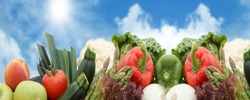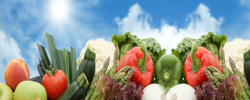
You’ve probably been hearing a lot about the value of a raw foods diet. A raw food diet consists primarily of uncooked, unprocessed fruits, vegetables, sprouts, seaweed, nuts and juices. It’s a vegetarian diet, but one that rejects any animal products. Its central tenet is that cooking and processing take out the majority of essential vitamins, enzymes and nutrients that our bodies evolved to thrive on.
Fruitarians, as the word implies, eat primarily fruits, with nuts and grains as well. A fruitarian diet also includes foods like tomatoes or avocadoes, which are fruits.
Fruit is nourishing and refreshing for your health. It doesn’t clog the body’s vital arteries; better still, it actually flushes and cleanses. A fruit diet also lightens our bodies and spirits, in line with the general lightening of our planetary vibration rate which many higher sources tell us is taking place at this time.
You need to eat carefully if you choose a fruitarian diet, because it can be more of a challenge to get enough essential protein in your diet. A fruitarian eats nothing which has been killed or stolen. That supplants meat, dairy, and plants with the thousands of fruit and nut combinations on the planet. E.g., a fruitarian can eat an avocado sandwich, a coconut milk shake or the purest coconut ice cream made from the milk and meat of the fruit, veggie burgers made of lentil or bean paste or tofu, a succotash of corn, limas, peas, and tomatoes, sweets made with pure maple syrup or date sugar, pecan pies made with fruit sugars, fruit shakes made of a mixture of orange and banana, pear and peach, pomegranate, papaya, and plum. A pizza of tofu, tomato, and pepper (not pepperoni), salads of tomato, cucumber, green and red peppers (but not lettuce, cabbage, or celery), nut butters such as almond butter or tahini, hummus (chickpea paste). In other words, fruitarian may eat fruits 99.9% of the time, but occasionally do indulge in the delicacies of other food groups.


 Does moving to a raw foods diet mean never eating hot food again? No, it doesn’t. Sometimes you want something hot. Hot food has always signified comfort for many of us. And on a cold, rainy day, carrot sticks or wheatgrass juice probably won’t cut it for most of us.
Does moving to a raw foods diet mean never eating hot food again? No, it doesn’t. Sometimes you want something hot. Hot food has always signified comfort for many of us. And on a cold, rainy day, carrot sticks or wheatgrass juice probably won’t cut it for most of us. What’s the largest organ in your body? It’s your skin! It provides a protective covering for the other organs of the body. It changes to regulate your internal body temperature. And it’s a good indicator of overall health and well-being.
What’s the largest organ in your body? It’s your skin! It provides a protective covering for the other organs of the body. It changes to regulate your internal body temperature. And it’s a good indicator of overall health and well-being.
